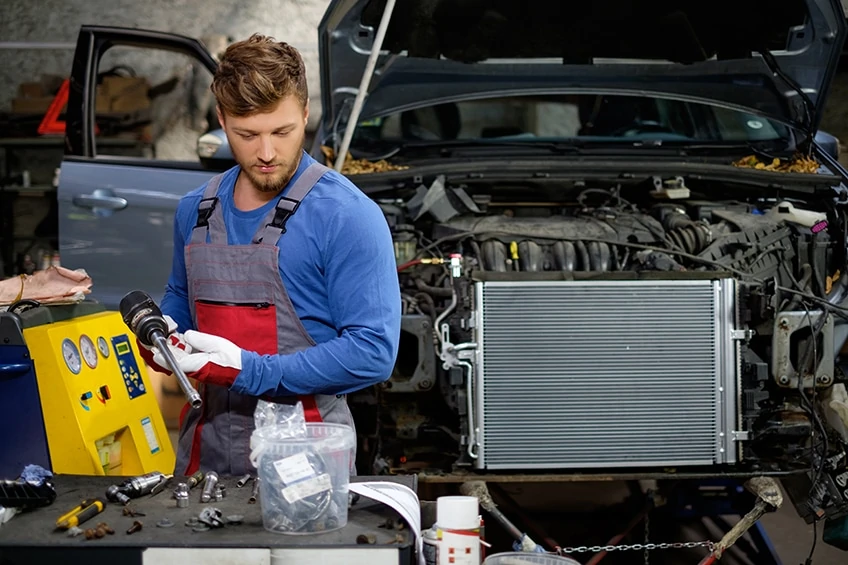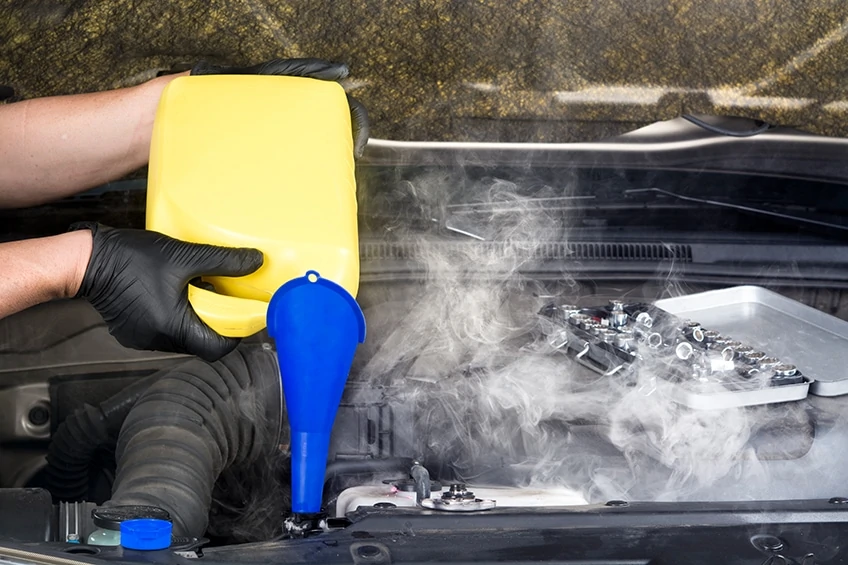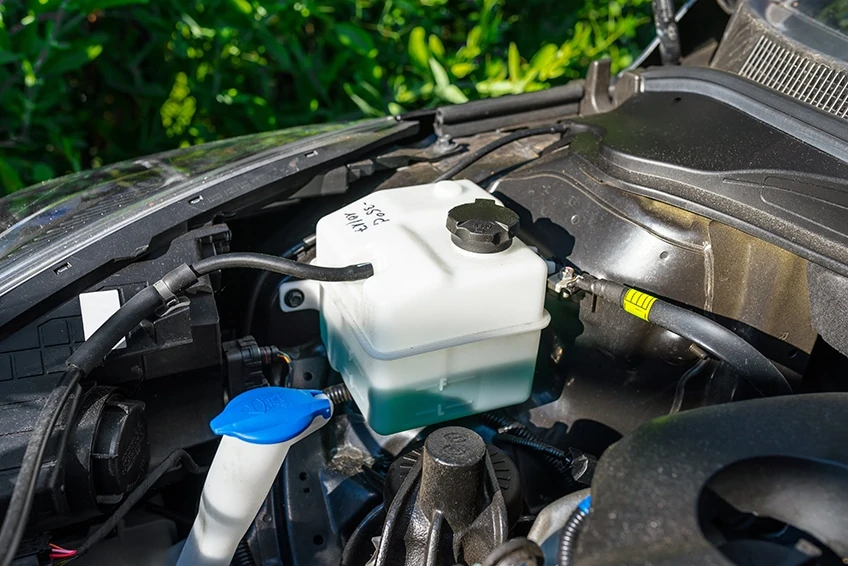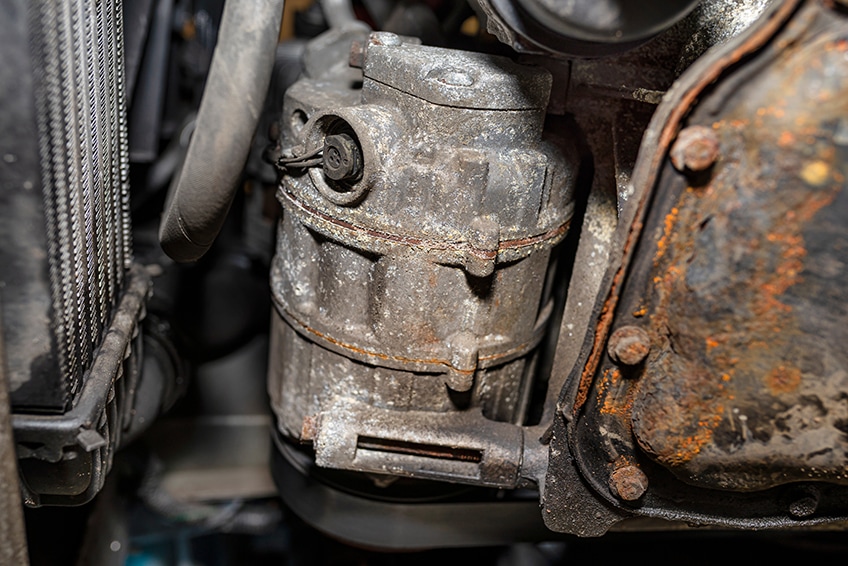Radiator Epoxy – Complete Guide for Radiator Crack Repair
This post may contain affiliate links. We may earn a small commission from purchases made through them, at no additional cost to you. You help to support resin-expert.com
Repairing your aluminum radiator can be a daunting task, but you can try to do it yourself using radiator epoxy. The first thing you need to do is locate the leak, the radiator must then be thoroughly clean before you can apply the epoxy. When using epoxy any surface must be free of dirt and clean, so that the epoxy can adhere correctly. When it comes to aluminum radiators, welding is difficult, and epoxy is a cost-effective way to repair it. However, epoxy can be hazardous, so you will have to work carefully. Also, keep out of harm’s way where the kids an animals cannot get hold of it. Below is a guide to applying radiator epoxy, to repair and seal cracks in your radiator.
Your helpful Guide to Radiator Crack Repair
Radiator crack repair, spotting the problem
What to look out for if you think you have a radiator leak. Most noticeable would be finding water under the car. As your car has many different liquids that could leak out, make sure it is coolant and not simply water.
Cooling the engine
Your first step to repairing your leak is to make sure the car is switched off and cools down completely. This helps to remove any pressure. Take anything out of the way, so you can easily get to the leak. Removing the radiator entirely can help you to work on it better, but this can be difficult.
Older model cars should not have too much of a problem removing the radiator, but the modern vehicles will most likely need a professional to do the job.
Try to locate the leak first, and then drain the radiator until just below the crack or damaged area. You can then begin by cleaning the area using brake cleaner. As mentioned, the surface must be completely clean before applying the epoxy.
Otherwise, the epoxy will not bond, and you will still have a leak. You can also sand the surrounding surface down to create a better bonding action with the epoxy.
Again, clean the area and make sure to allow the everything to dry completely. Any dampness will also affect the bonding of the epoxy. Once dry, prepare your epoxy for application to the leak.
Radiator crack repair: Fixing the leak
The area to be repaired is now clean, dry, and ready. You will be able to find epoxy that comes in strips, break a piece off that you will need, press, and rub together until it becomes softer. The more you squeeze and work with it, the more pliable it becomes, which makes it easy to work with.
- Two-part epoxy putty reinforced with steel particles for lasting repairs
- The epoxy takes only 5 minutes to set and cures within an hour
- This epoxy can be molded, shaped, sanded, drilled, and tapped
Apply the epoxy and cover the entire area, any surplus can be removed. Take your time when doing this, the layer should be correctly applied so that when pressure builds inside the radiator, the epoxy will remain stable. Allow the epoxy to cure fully, it will become hard around one hour but leave it to fully harden overnight.
Inspect your work
Check everything before you start your car, put things back you removed and make certain there is enough antifreeze. Inspect the epoxy patch you applied, see that it is nice and secure. Start the car and inspect the repaired leak. Allow the engine to run a bit, to build up some pressure. Then check your work again to see if it is still in place.
After about ten minutes and you see no leaks, the job has been done correctly. Now you can everything up. Preferably, you should wear protective gloves when working with the epoxy as it is toxic.
Otherwise, make sure you wash your hands thoroughly to remove any epoxy if you did not. Check for any other spilt chemicals such as antifreeze and meticulously clean these up as well.
These types of chemicals are toxic and should be handled properly. When discarding these chemicals, do it properly, as they are also bad for the environment.
How to fix a cracked radiator plastic
In many cases when you take your car in for radiator repairs, they will repair a metal radiator but not a plastic one. They will try and convince you to put a new radiator in. This can become expensive than simply repairing.
Simple radiator repairs are pretty straightforward to correct. There are just some things to take note of when it comes to plastic radiators. Any repairs will have to be able to endure high temperatures from 200°F (94°C) and more.
The plastic radiator repair epoxy must hold extremely hot and pressurized coolant. So, you will know if your repair is not done correctly. Plastic radiator tanks consist of glass-reinforced nylon, which has a high softening feature. This helps the entire radiator structure endure the great stress it is placed under.
Now, let us have a closer look at how to fix a cracked radiator plastic:
- Fixing the radiator inside the car, drain any water to underneath the leak or crack line. This is to prevent any water from spilling over while you are busy. Clean the area that needs to be repaired by applying some Super Prep Plastic Cleaner
- Use a heat gun to repair faster, the heat will soften the plastic
- Heat the are area up gradually, you should notice the crack groove and surrounding surface become glossy. When it comes to longer cracks, slowly heat 2-inches of the repair area each time and make sure to finish the weld before you carry on to the next section
- When welding, use the tip to soften a V-shaped channel down the length of the break
- Take a Nylon rod and melt this into the groove using the airless plastic welder. The rod will melt onto the damaged area. You will notice the color of the rod comes out slightly brown
- Do the job in a well-ventilated area, as the fumes can be nasty
- Once the nylon rod has been melted into the repair area, take out the rest from the welder. Then use the welder tip to blend the melted nylon with the old radiator plastic.
- Blend until you reach an even color
- Make sure to try and get an even blend of the old and new plastic, which will ensure a stronger repair
- Let everything cool down and become hard again
You can also use plastic radiator repair epoxy to fix a leak in your plastic radiator. Easily purchase a radiator plastic repair kit, which contains your two-part epoxy putty.
The plastic radiator repair epoxy is a similar method to the above guide to radiator crack repair. The best epoxy for plastic radiator repair would be J-B Weld, which will work on plastic tanks as well as other metal surfaces.
Questions and Answer
Is it possible to repair radiator crack?
You must be able to find the crack or leak in your radiator, then you should be able to fix the damage with epoxy. Clean the area around the crack to make sure you form a strong bond with the epoxy, forming a tight seal.
Can you use J-B Weld on your radiator?
Yes, J-B Weld is the best epoxy for plastic radiator repair, and it works on multiple surfaces. You will not have to take the radiator out to repair a leak.
Can you use radiator epoxy?
Yes, radiator epoxy or cold weld epoxy is effective in repairing a leak. However, this is not a lasting solution. You fix a radiator leak yourself and it should hold for a while, but it is recommended you get a replacement as soon as possible.
How to fix a cracked radiator plastic? You can repair a leak on both a metal and a plastic radiator. The plastic radiator can be repaired using epoxy or plastic welder and a nylon rod.
How long can you go with a radiator leak?
Do not wait, see to the leak as soon as you can. If the crack or hole is still small and you repair it, this should last for quite a long time without problems. Also, you will want to repair your radiator when it is cooled down and not when it has broken down somewhere on the road.
You might want to consider replacing your radiator in cases where there are larger damages and corrosion. Making sure you catch the problem before it gets too big, is key to keeping your radiator going for longer.








